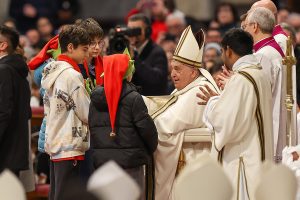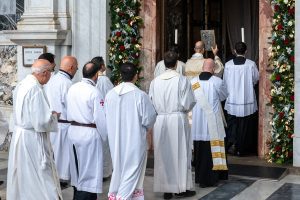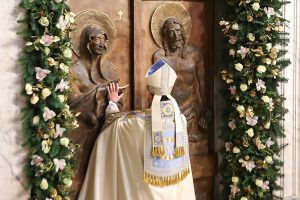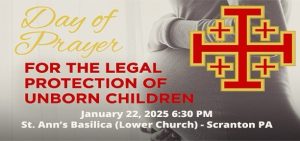VATICAN CITY (CNS) – Pope Francis has appointed Consolata Missionary Sister Simona Brambilla to be the first woman to lead a Vatican dicastery, naming her prefect of the Dicastery for Institutes of Consecrated Life and Societies of Apostolic Life.
The 59-year-old Italian sister had served as secretary of the dicastery since October 2023.
The announcement of her appointment Jan. 6 also said Pope Francis named as pro-prefect of the dicastery Spanish Cardinal Ángel Fernández Artime, 64, the former rector general of the Salesians.
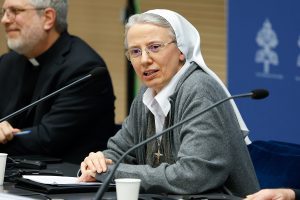
The Vatican press office did not reply to requests to explain why the cardinal was given the title pro-prefect or how his role would be different from that of a dicastery secretary.
The dicastery, according to the apostolic constitution on the Roman Curia, is called “to promote, encourage and regulate the practice of the evangelical counsels, how they are lived out in the approved forms of consecrated life and all matters concerning the life and activity of Societies of Apostolic Life throughout the Latin Church.”
According to Vatican statistics, there are close to 600,000 professed women religious in the Catholic Church. The number of religious-order priests is about 128,500 and the number of religious brothers is close to 50,000.
When a vowed member of a religious order asks to leave or is asked by the community to leave, the decision must be approved by the dicastery.
It approves the establishment of new religious orders, approves the drafting or updating of the orders’ constitutions, oversees the merger or suppression of religious orders and the formation of unions of superiors general.
Sister Brambilla succeeds 77-year-old Brazilian Cardinal João Bráz de Aviz, who has led the dicastery since 2011.
She is one of two women Pope Francis appointed in early December to be members of the Ordinary Council of the General Secretariat of the Synod, the committee that oversees the implementation of the most recent synod and prepares the next assembly.
Born in Monza, Italy, March 27, 1965, she earned a degree in nursing before entering the Consolata order in 1988. She studied psychology at Rome’s Pontifical Gregorian University, and in 1999, after taking her final vows, she went to Mozambique where she did youth ministry before returning to Rome in 2002, earning her doctorate in psychology from the Gregorian University in 2008.
She served two terms as superior of the Consolata Missionary Sisters, leading the congregation from 2011 to May 2023.
Cardinal Fernández Artime has been awaiting an assignment from the pope since August when his term as superior of the Salesians ended.
Born Aug. 21, 1960, in Gozón-Luanco, Spain, he entered the Salesians at the age of 18 and was ordained to the priesthood in 1987. He holds a degree in pastoral theology, a licentiate in philosophy and pedagogy, and, as a priest, he worked in Salesian schools both in teaching and administration.
After serving in Spain, he was appointed provincial superior of southern Argentina in 2009. Working in Buenos Aires, Cardinal-designate Fernández Artime got to know and work personally with then-Archbishop Jorge Bergoglio of Buenos Aires, who would become Pope Francis four years later.
In 2014, he was elected rector major of the Salesians and the 10th successor of St. John Bosco; he was re-elected in 2020. Pope Francis made him a cardinal in September 2023 and allowed him to continue as the Salesian superior until a chapter meeting and election could be held.

